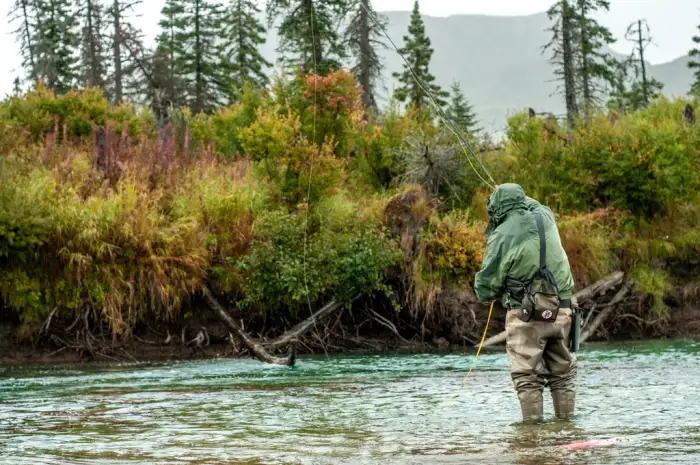Embarking on a fly-fishing journey can be daunting, especially when you’re new to the sport and uncertain about techniques. But don’t let inexperience hold you back. With the right approach and a little patience, you can enjoy the thrill of catching fish, even when you’re just starting out. This guide will help you navigate the early stages of fly fishing by focusing on a simple yet effective strategy that can set you on the path to success.
When Fly Fishing Felt Like a Mystery
In the beginning, fly fishing might seem like an intricate puzzle. The concept of “matching the hatch”—choosing a fly that mimics the insects fish are feeding on—makes sense in theory. But when you’re out on the water, it can be overwhelming. The bugs are quick, small, and often hard to identify. For a novice, the challenge of selecting the right fly can feel insurmountable.
As a beginner, you might find yourself thumbing through countless articles and guides, all stressing the importance of matching the hatch. But without a solid reference point, it’s easy to feel lost. Identifying specific insects while they’re buzzing around can be tricky, and this task often leaves new anglers frustrated.
The Persistence Pays Off
Despite the initial hurdles, persistence is key. Fly fishing is as much about patience and practice as it is about technique. Even when things don’t make sense right away, the desire to experience the exhilaration of landing a trout on a fly keeps many anglers motivated.
For those who stick with it, the payoff comes not just in the form of fish caught, but in the gradual understanding of the river’s ecosystem. With time, you’ll start recognizing patterns, not just in the water but in the insects that inhabit it.

A Game-Changing Discovery
A turning point for many beginners is the discovery of a versatile fly pattern that doesn’t require perfect identification of insects. This approach can simplify the learning curve significantly. For example, a small article that I read years ago highlighted a fly pattern that was not an exact match for any one insect, but a close enough approximation to entice fish. This revelation was a game changer. Instead of matching the exact species, the focus shifted to matching the size and general appearance of the insects. This is something any angler can do with a bit of practice.
The Go-To Fly: The Elk Hair Caddis
The fly that often emerges as a beginner’s best friend is the Elk Hair Caddis. This fly doesn’t replicate a specific insect but has a general “buggy” look that appeals to fish. Its simplicity and effectiveness make it a must-have in any fly box, especially for those just starting out. Made from elk hair and hackle, it floats well on the water, is easy to see, and, most importantly, catches fish.
The Elk Hair Caddis excels because it can mimic a variety of insects, from caddisflies to small stoneflies, and even terrestrial bugs like grasshoppers. Its versatility means that even when you’re not sure what’s hatching, this fly has a good chance of attracting fish.
Gaining Confidence on the Water
As you spend more time fly fishing, your understanding of aquatic insects will naturally improve. You’ll start to recognize the difference between mayflies, caddisflies, and midges. This knowledge, combined with your growing experience, will allow you to make more informed choices about which flies to use.
With time, the once-daunting task of selecting the right fly becomes second nature. You’ll begin to identify insects more easily, and your success rate on the water will increase. What’s most rewarding is the realization that you’re no longer just fishing; you’re engaging with the environment in a deeper, more connected way.
The Journey Continues: Building on Success
The Elk Hair Caddis is just the beginning. As you continue your fly fishing journey, you’ll experiment with different patterns, learn to read the water, and hone your casting technique. Each trip to the river will bring new lessons and experiences.
The key takeaway is that early success in fly fishing, like catching your first trout on an Elk Hair Caddis, can spark a lifelong passion. This small victory provides the encouragement needed to keep learning, exploring, and enjoying the sport.
Fly fishing is as much about the process as it is about the catch. The satisfaction of seeing your skills grow, and the joy of being out in nature, are what will keep you coming back to the water time and time again. So, gear up, tie on an Elk Hair Caddis, and cast your line—your fly fishing adventure is just beginning.
Image/Source: MensJournal





